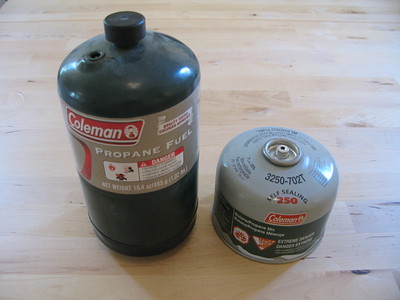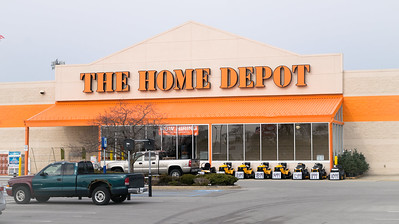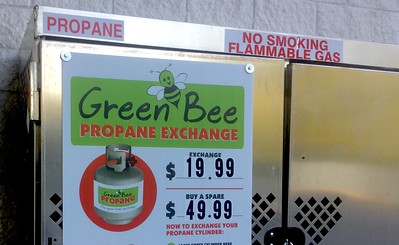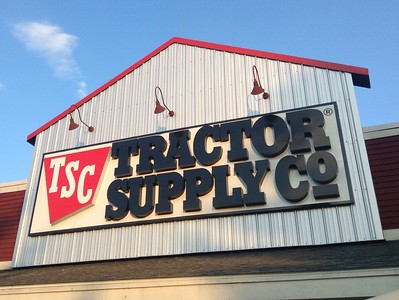
The answer to this question depends on a few factors. If you have a small, personal-sized Coleman propane tank, then it is likely that you can refill it yourself. These tanks typically hold between 1lb of propane and are easy to handle. All you need is a propane refill adapter, which can be purchased at most hardware stores.
However, if you have a larger Coleman propane tank – such as the ones used for camping or outdoor cooking – then it is not recommended that you try to refill it yourself. These tanks can hold up more pounds of propane and are much more difficult to handle.
Let us remind you! DOT has issued reminders and inform the public not to refill DOT 39 cylinder which includes these 1lb bottles for camping and bottles sizes. These tanks are disposal and it is highly dangerous to refill it, incidents of injuries and fatalities have been reported.
What Defines a “Small” Coleman Propane Tank?
When you think of Coleman, you probably picture outdoor camping gear, and their propane tanks are no exception. If you’re curious about what exactly qualifies as a “small” Coleman propane tank, here’s a breakdown for you.
Size, Capacity, and Typical Uses:
- Dimensions: A small Coleman propane tank you might have seen is about 8 inches tall and roughly 4 inches in diameter.
- Capacity: These compact tanks usually hold around 16.4 ounces (1 lb) of propane. That’s a lot less than the bigger tanks you’d use for grills or RVs, which can carry 20 lbs or more.
- Typical Uses: Their size makes them perfect for on-the-go activities:
- Camping stoves: Have you used one on a camping trip? One of these tanks can power your stove for several hours, depending on your stove’s efficiency.
- Lanterns: Perfect for illuminating your campsite.
- Heaters: Handy for warming up tents or other outdoor spots.
- Torches: Useful for everything from soldering tasks to getting that campfire going.
Disposable vs. Refillable Propane Tanks: What’s the Difference?
- Disposable Tanks:
- Material: They’re made of thinner steel and are meant for just one use.
- Valve Design: These tanks come with a single-use valve. It doesn’t have the safety features needed for refilling.
- Disposal: Once you’ve used up all the propane, it’s essential to dispose of it safely. And make sure they’re entirely empty to avoid any risks.
- Cost: They might seem cheaper when you first buy them, but if you use them often, those costs can add up.
- Refillable Tanks:
- Material: These are designed for the long haul with thicker materials ready for multiple refills.
- Valve Design: The valve system on these is robust and built for safe refilling. Many come with an overfill prevention device for extra peace of mind.
- Certification: Depending on where you live, refillable tanks might need to meet certain safety standards and get inspected now and then.
- Lifespan: Take good care of them, and they can serve you for many years. That makes them both eco-friendly and more pocket-friendly in the long run.
So, next time you gear up for an outdoor adventure, you’ll know the ins and outs of your small Coleman propane tank. Whether you opt for disposable or refillable, it’s all about ensuring safety and getting the best value for your needs.
Legal Implications of Refilling
When you use propane, you’re tapping into a valuable fuel source. But before you consider refilling those small Coleman propane tanks or any others, you need to be in the know about the legal side of things. Here’s what you should be aware of:
Regulations or Prohibitions on Refilling Certain Types of Propane Tanks:
- Disposable Tanks Aren’t Always Refill-Friendly: In many places, refilling disposable propane tanks is a no-go. They’re designed for just one use, so trying to refill them might not just be risky—it could be illegal.
- Check Your Tank’s Certification: Those refillable propane tanks you have? They come with a shelf life. After a certain period, they need a check-up, or recertification, to make sure they’re still safe. Make a note of your tank’s manufacturing date and stay updated on how often it needs to be checked in your area.
- Refill Only at the Right Spots: It’s not about where you’re closest to but where it’s legal. Only go to licensed and approved spots to get your propane tanks refilled. They’re the ones following all the safety protocols.
- Transport Them Safely and Legally: Once you’ve got your refilled tank, remember that there might be rules on how to transport it. This could be things like keeping it upright, ensuring it’s stored securely, or even making sure there’s enough ventilation around.
Potential Penalties or Liabilities for Improper Refilling or Usage:
- Watch Out for Fines: Thinking of refilling that disposable tank? Or using a tank that’s past its prime? Be careful—you could be hit with a hefty fine.
- You Could Be Liable for Mishaps: If something goes wrong with a tank you refilled improperly, you could be on the hook for any resulting damage. That might mean property damage or even medical bills.
- The Serious Side—Criminal Charges: In the worst cases, if someone gets seriously hurt (or worse) because of negligence with propane, it could land you in some severe legal hot water.
- Insurance Might Not Have Your Back: If you run a business and don’t play by the propane rules, any insurance claims related to propane accidents might be denied.
- Businesses, Beware of Losing Your License: If you’re a business and you’re caught cutting corners with propane safety more than once, you could risk losing your operating license.
Refilling propane tanks might be convenient and even eco-friendly, but it’s crucial you stay on the right side of the law. Always prioritize safety, and if you’re ever unsure, reach out to experts or local authorities for guidance. Safety first, always!
Do Coleman 1-lb propane tanks come filled?
If you’re looking for a small, portable propane tank for camping or other outdoor activities, you may be wondering if Coleman 1lb propane tanks come filled. The answer is yes, Coleman 1lb propane tanks are typically sold already filled with propane. However, it’s always a good idea to check the pressure of the tank before using it to make sure that there’s enough propane in it.
The tank is filled with a pressure-regulated blend of propane and butane. This filling process ensures that the tank will not be overfilled, which could lead to a dangerous situation.
You might have already seen it, on Youtube or somewhere else, a guy refilling a 1lb bottle, although it is possible to refill it, it is not safe. These bottles are not intended for refilling. There are big chances of accidents when refilling these bottles in the DIY method.
Is it safe to refill 1-lb propane bottles?
If you’re thinking about refilling your 1lb propane tank, think again. It’s not safe to refill these tanks because they’re not designed to be refilled. The valves and pressure relief devices on 1lb propane tanks are not meant to be opened and closed multiple times. opening and closing the valve on a 1lb propane tank can damage the valve, making it unsafe to use.
Additionally, overfilling a 1lb propane tank can result in a dangerous pressure build-up inside the tank. This could cause the tank to rupture or explode, causing serious injury or even death. So, save yourself the hassle and don’t try to refill your 1lb propane tank. It’s just not worth the risk.
1lb propane bottles are not safe to refill for several reasons.
First, the valve on 1lb propane bottles is not designed to be removed and replaced.
Second, the pressure in a 1lb propane bottle is much higher than that of a standard tank, making it more likely to explode if not handled properly.
Finally, the small size of 1lb propane bottles makes them more difficult to control when refilling, increasing the risk of an accident.
How long does a 1-lb Coleman propane tank last?
A full 1 lb Coleman propane tank should last you about 3-4 hours on average. However, keep in mind that this will depend on Factors such as how much heat you’re trying to generate, the size of your space, and the outside temperature. If you’re only using your heater for short periods of time or in a very small space, your propane tank may last even longer.
However, keep in mind that this will depend on Factors such as how much heat you’re trying to generate, the size of your space, and the outside temperature. If you’re only using your heater for short periods of time or in a very small space, your propane tank may last even longer.
Ultimately, it all comes down to your own personal usage.
How can you tell if a 1-lb propane tank is empty?
If you have a 1lb propane tank that you’re not sure is empty, there are a few ways to tell. One way is to check the weight of the tank. An empty 1lb propane tank should weigh about 17 ounces. Another way to tell if a 1lb propane tank is empty is by checking the regulator gauge. If the needle on the gauge is in the red zone, that means the tank is empty. Finally, you can try to unscrew the valve on the tank. If the valve doesn’t budge, that means there’s no propane left in the tank.
What is the hole on 1-lb propane tank?
If you have ever looked closely at a 1lb propane tank, you may have noticed a small hole near the top. This hole is actually a very important part of the tank and serves a few different purposes.
The first purpose of the hole is to allow for pressure relief. As the propane inside the tank heats up, the pressure inside the tank increases. If this pressure were to build up too much, it could cause the tank to explode. The hole helps to release this pressure and prevent an explosion.
The second purpose of the hole is to allow air to enter the tank as propane is used up. As propane is used, the levels inside the tank decrease. This decrease in pressure can cause problems when trying to use the propane if there is no way for air to enter the tank and take its place. The hole helps to ensure that there is always enough pressure inside the tank for proper operation.
So, next time you look at a 1lb propane tank, remember that that small hole near the top is actually there for a very important reason!
To make a conclusion
It is generally not recommended to refill small Coleman propane tanks. These tanks are typically designed for single use and are not equipped with the necessary safety features to be refilled. In addition, refilling these tanks can be dangerous and may violate federal regulations.
If you need to refill a small propane tank, it is generally a better idea to purchase a new tank rather than attempting to refill the old one. This will help to ensure the safety of you and those around you, and will also help to ensure that you are in compliance with federal regulations.
If you have a larger propane tank that is designed for refilling, it is important to follow proper safety guidelines and follow the manufacturer’s instructions for refilling the tank. This includes using the correct equipment and taking all necessary precautions to ensure the safe handling of propane. If you have any further questions or concerns about refilling propane tanks, we would be happy to help.

Mike is an experienced propane technician with over 15 years of professional experience in the field. He has dedicated his career to helping customers with their propane needs, from installation to maintenance and repair. Together with Jeremy, he co-founded this website to provide useful information and guidance to customers seeking reliable propane services.



